Why Do We View Black Girls as Sex Objects?
The story was originally published in Word in Black with support from the USC Annenberg Center for Health Journalism’s 2022 Data Fellowship.
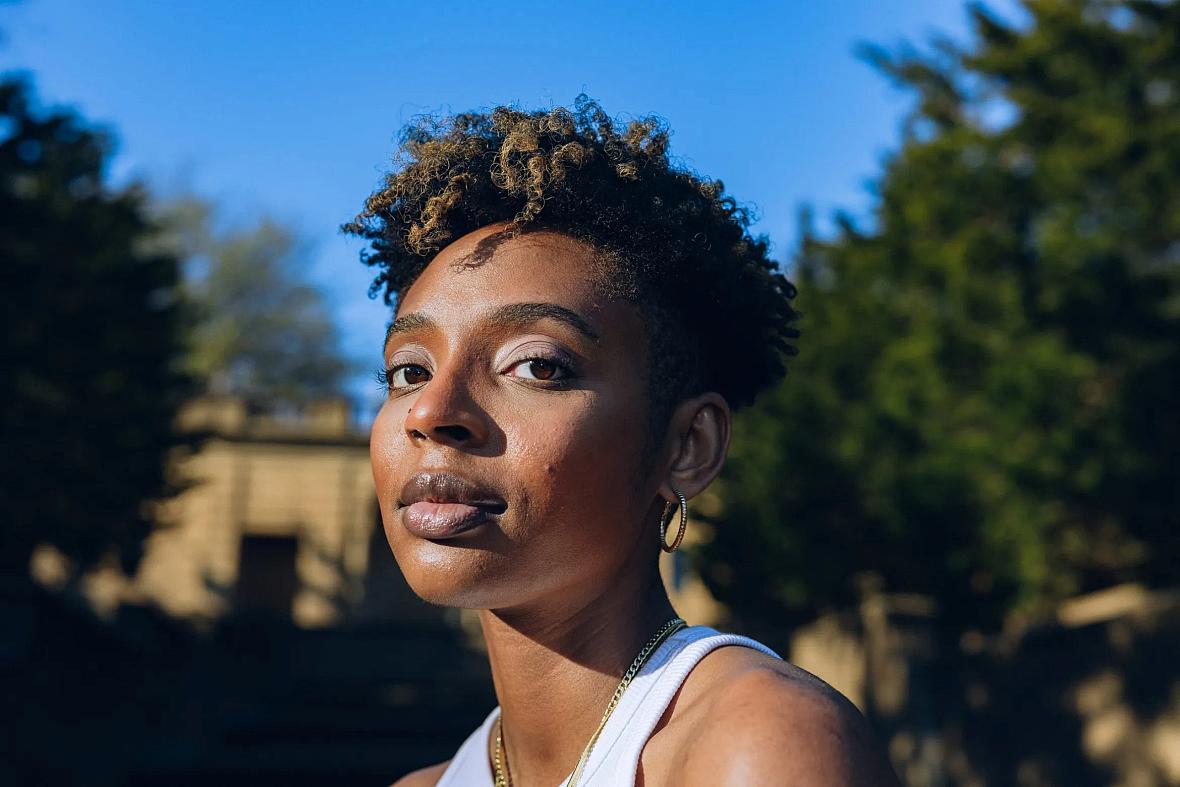
Shamari White, 26, poses for portraits at Meridian Hill/ Malcolm X park in Washington, D.C., on March 5, 2023. White experienced suicidal ideation and self-harm due to bullying and sexualization in middle school.
(Maen Hammad/Word In Black)
“I think you need my d— in your life.”
That’s just one comment Tamica Jean-Charles heard as a teenager. A stranger said those words to her while she was in a Barnes & Noble.
Catcalls from random adult men started at 9. Sexual comments about her body left her feeling disgusted and unsure about what she was doing wrong. The reality is Black girls are so often viewed as sex objects that the blame is shifted to the girls being sexualized.
But is it little girls doing something wrong, or does the adult gaze on a child need to shift?
One can argue that girls need to dress age appropriately, but this story isn’t about the debate on clothing — it’s about perception. For Jean-Charles, the growth and development of her body were labeled, watched, and sexualized.
“I had an uncle who would touch my butt when he would hug me sometimes,” she says. “He would lightly pat it or just lightly squeeze it. I wasn’t fully grasping what was happening.”
That started when her uncle moved into the family house. She was 12. The inappropriate touching was discreet enough that other family members didn’t notice. But afraid of confrontation, Jean-Charles didn’t speak up about it.
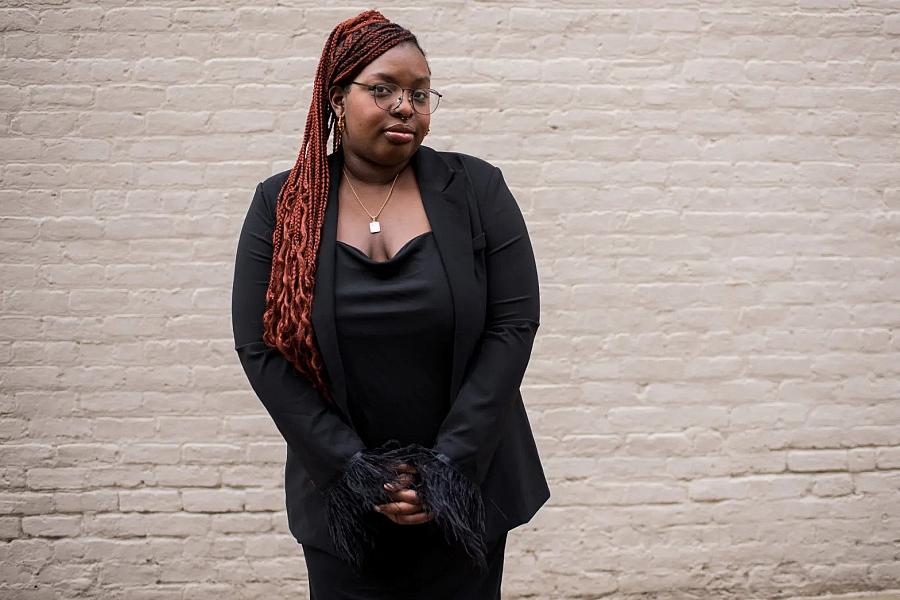
Tamica Jean-Charles, 24, poses for portraits at the Downtown Mall in Charlottesville, Virginia, on March 1, 2023. She was sexualized as a teenager by adult men. This contributed to her experiencing low self-esteem.
(Kori Price/Word In Black)
Jean-Charles says sexual comments or gestures didn’t just come from adults. While attending a predominately white high school, classmates also made statements about her body. She recalls one instance during church camp with a group of girls who convinced her to start twerking. Unknowingly, she was recorded. Days later, the video began circulating on social media and via text messaging.
“It was so f–ed up,” she says. “Knowing that guys were watching it as well made me feel like s–t. Because I was probably one of two or three Black people out of 50 kids going. That was the first time I genuinely felt and recognized exploitation.”
You see me as an object.
Research shows a strong link between race-based bullying and negative emotional health effects. According to the National Center for Educational Statistics, about a quarter of Black students experience bullying in school.
After feeling used for laughs, Jean-Charles says her self-esteem took a hit.
When asked if she felt she had to remain silent about these situations, Jean-Charles says, “there was just no point in saying anything.” She felt ostracized and as if no one had her back. Now as a 24-year-old education reporter in Charlottesville, Virginia, looking back on these experiences, she realizes she suppressed much of it.
“It was just really unsettling,” she says. “You see me as an object at that point. I was just really confused.”
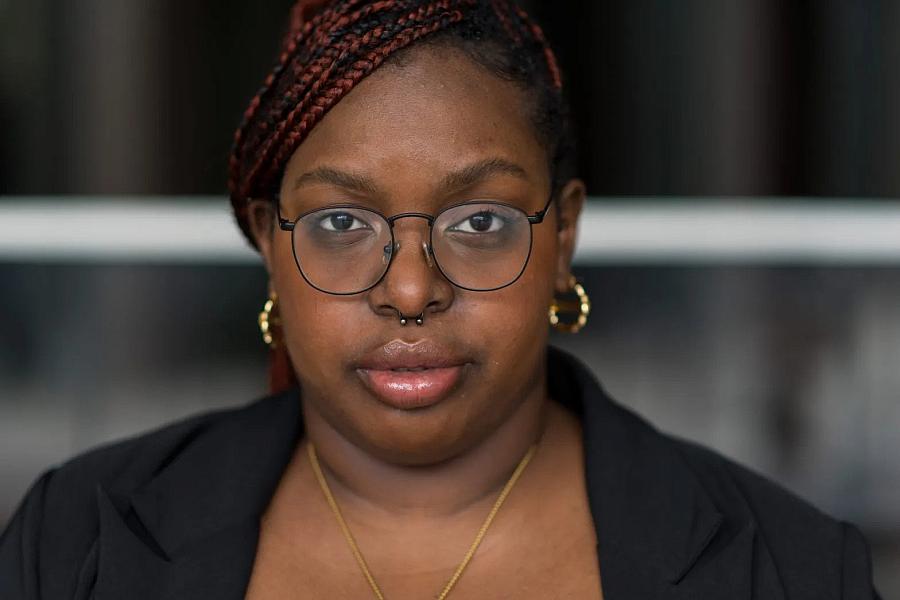
Tamica Jean-Charles, 24, poses at the Downtown Mall in Charlottesville, Virginia, on March 1, 2023.
(Kori Price/Word In Black)
Assigning a Value to a Body
Sara C. Flowers is the vice president of education at Planned Parenthood Federation of America. She has a doctorate in public health and focuses on sex education while centering on Black youth. In her experience, she has noticed elders in the Black community talk about the physical development of children as a direct correlation to being “fast.”
But research says the opposite. The average age in the physical development of girls typically starts between ages 8 to 13. Every girl is different, and you can’t control the timing of puberty.
“The physical changes that a person who doesn’t live in your body witnesses and then assigning a value to it, a value around being more grown-up than you are developmentally … is the adultification that I’m referring to,” she says. “Frankly, the messages are confusing.”
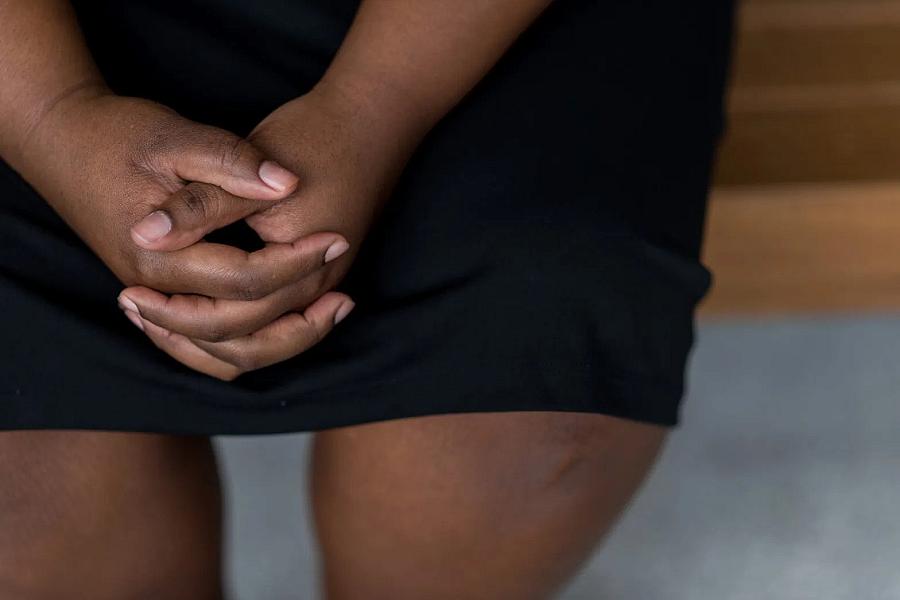
Tamica Jean-Charles, 24, poses at the Downtown Mall in Charlottesville, Virginia, on March 1, 2023.
(Kori Price/Word In Black)
Flowers used to teach workshops to teachers and school administrators around gender and inclusivity. She asked them about their dress code policies. Questioning the validity of these policies, she says that the emphasis usually falls on the policing of girls’ uniforms. There is a notion that certain bodies need to be policed because it’s a distraction to other students.
“It’s not actually teaching bodily autonomy to those other students,” Flowers says. “It teaches girls that their natural bodies are a distraction to students and adults, and it’s their responsibility to cover up.”
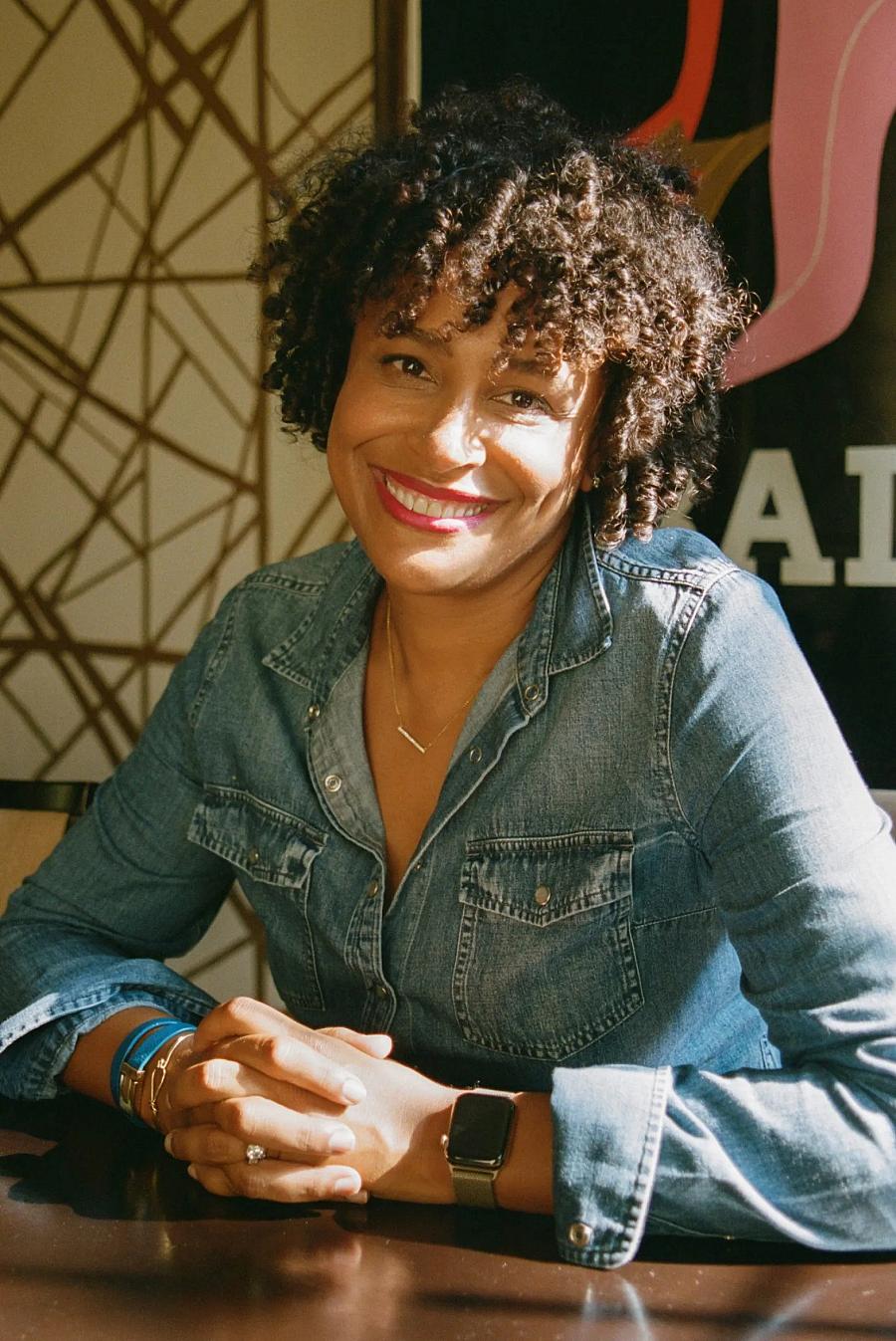
Sara C. Flowers, vice president of education at Planned Parenthood Federation of America. Photo by Clemence Poles. Courtesy of Planned Parenthood.
When Black children and youth experience adultification, the expectations and values pushed by adults don’t set them up for success, she says. Because, developmentally, young ones are not where they are told they should be.
“When we think about adultification and the impact on our sexuality, what we then internalize is shame,” Flowers says.
For parents, adults, and teachers who primarily send these messages, it’s important to send affirming messages about a child’s body. The consequence of negatively labeling a child’s body contributes to a distorted view of sex, pleasure, and sexuality. Constantly telling a Black child they are fast simply for existing in their bodies can lead to feelings of shame and fear.
With confusing and oftentimes inappropriate messages directed toward children as they grow up, it can make it difficult to establish bodily autonomy, boundaries, and consent.
“If we constantly posit that girls’ bodies are only useful and worthy of any attention if it’s in a sexual light, then are we saying that that’s only because they’re used for pleasure for people with penises?” Flowers says. “That’s mind-blowing.”
“I Had No Choice But to Grow Up Fast”
Shamari White is a 26-year-old communications associate in Washington, D.C. As a child, she helped care for her siblings. White did housework and ran errands. With the expectation to take on more responsibilities, family members viewed and treated her as older than her age.
“I had no choice but to grow up fast,” she says.
Growing up in South Carolina with her mom and grandparents, she says they paid close attention to her clothing — making sure she didn’t dress like a “hoochie mama.” Due to the constant surveillance of her clothes, White wasn’t comfortable wearing skirts or shorts until after college.
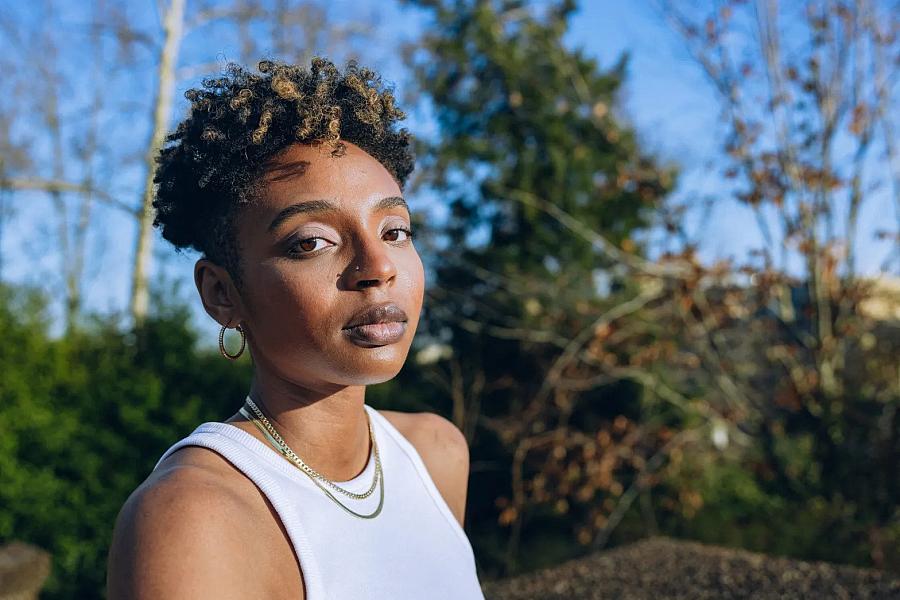
Shamari White, 26, poses for portraits at Meridian Hill/Malcolm X park in Washington, D.C., on March 5, 2023.
(Maen Hammad/Word In Black)
White says she avoided wearing anything revealing or tight — she wore baggy clothes in middle and high school. She dressed “like a boy” during those years. But that’s when questions about her sexuality started. People assumed she was gay.
On top of that, attending a predominately white middle school, she experienced bullying. Students would comment on her height and weight. They made fun of her for developing later. Later, adults told her she would get “thick” when she had babies.
I had to fight for my life.
The bullying and sexually inappropriate comments made White feel depressed and anxious.
“I was very suicidal in middle school, and I engaged in self-harm, too. I was also popping pills,” she says. “I hated myself so much. I really didn’t know what was the good thing about me because everyone would pick at it.”
In a 2021 national survey on drug use and health, Black and Latino youths aged 12-17 had the highest rates of suicide attempts. With more than 3 million youths experiencing serious thoughts of suicide.
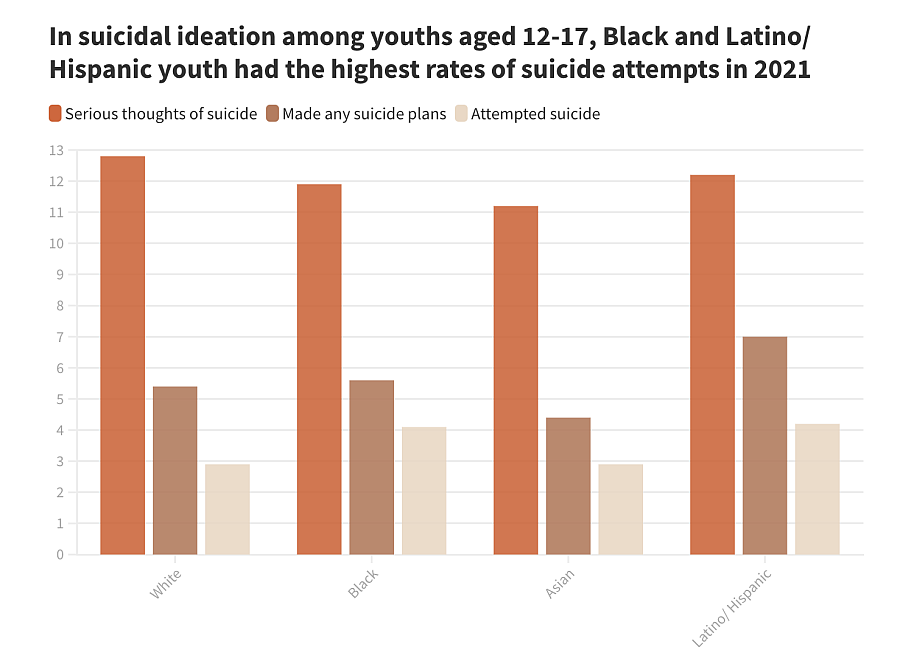
Source: SAMHSA
Graphic by Anissa Durham
White details how her mental health became dangerous. “I would cut myself … to numb the pain,” she says. As a result, she made any excuse to cover her body — even if that meant wearing jeans and long sleeves during summer. She says her self-confidence was “in the garbage.” And it took her years to learn to accept her body.
“Middle school was the worst,” she says. “That’s really when I had to fight for my life.”
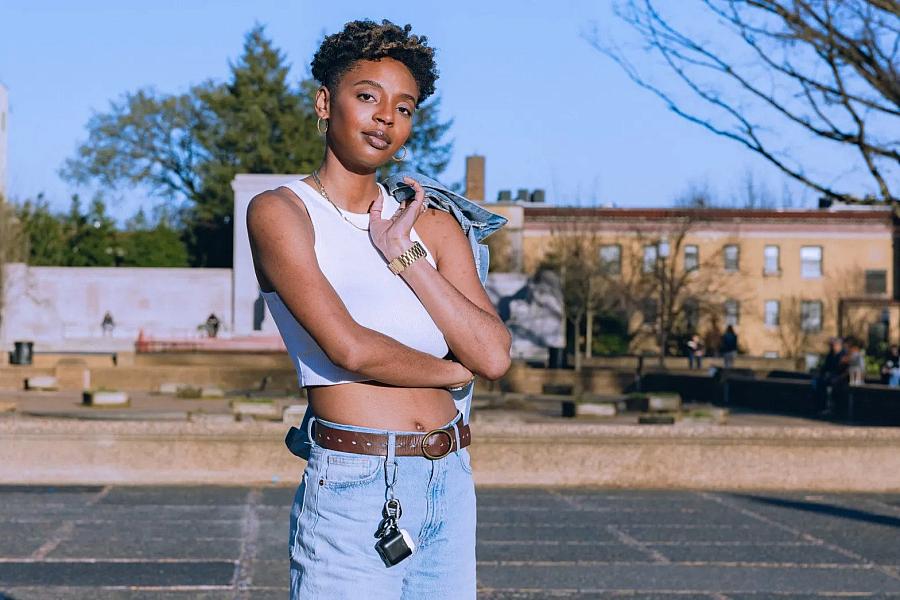
Shamari White, 26, poses for portraits at Meridian Hill/Malcolm X park in Washington, D.C., on March 5, 2023.
(Maen Hammad/Word In Black)
Now in her mid-20s, she’s more aware of how men talk to her. She is also not afraid to call out old-school family members who make comments about her little cousins. She says parents need to do a better job of being mindful of how they talk to their children and what they say around them. As an adult, she wants to protect little Black girls from “pedophiles.”
“We have to stop talking about Black girls like that — you have to stop sexualizing them,” White says. “It’s weird. They’re kids.”
Did you like this story? Your support means a lot! Your tax-deductible donation will advance our mission of supporting journalism as a catalyst for change.
